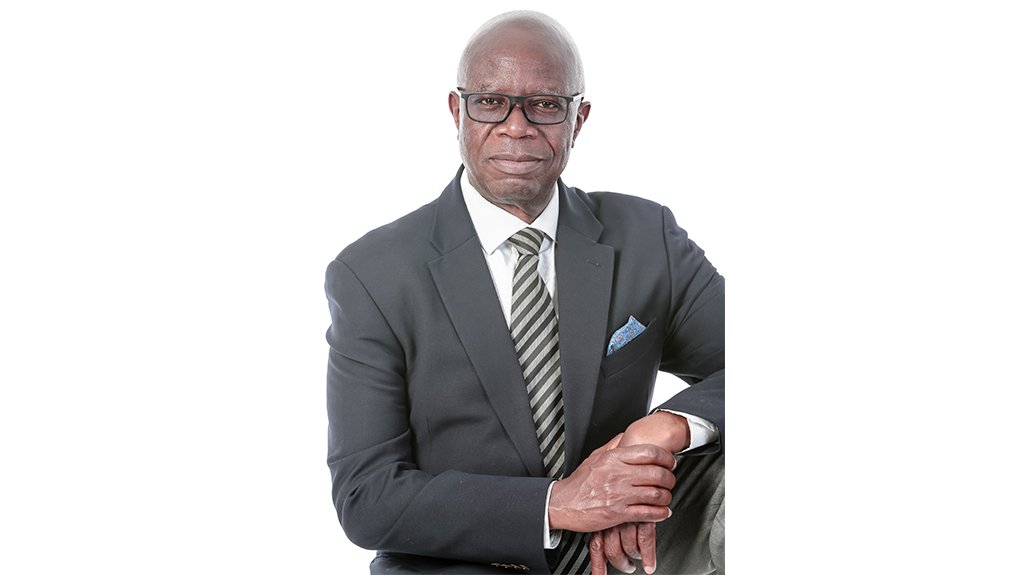As of mid-August, combined domestic and international passenger traffic to, from and within Southern Africa has recovered to about 64% of August 2019 levels, says industry body Airlines Association of Southern Africa (AASA) CEO Aaron Munetsi.
This is despite the Southern Africa air transport industry having undergone a major upheaval and change in the past 30 months.
He adds that the Covid-19 pandemic resulted in air traffic “evaporating overnight” in late March 2020.
The pandemic’s impact also harmed the industry’s providers of infrastructure and services, “with ripple effects throughout the respective supply and value chains of these industries”.
Munetsi also stresses that State-owned carrier South African Airways’ (SAA) emergence from its business rescue with a smaller fleet, network and schedule has redefined the air transport landscape.
Previously, SAA accounted for about 40% of all long-haul and regional travel to and from the region and provided feed traffic for all locally based airlines.
In the same period, Southern African airlines such as SA Express, Air Namibia and Comair have gone into liquidation, as Mango has also suspended operations pending the outcome of its business rescue, he explains.
Despite this decline in the industry, many countries have relaxed their Covid-19 travel restrictions, onerous tests and quarantine measures. Consequently, the market has responded positively to a strong recovery in demand for travel, Munetsi states.
“The industry is far from static. Airlines such as Airlink, Cemair and FlySafair are all expanding their operations, and we have also seen Lift enter the domestic market. “Elsewhere in the region, airlines such as Air Botswana, FastJet, LAM Mozambique Airlines, TAAG Angola Airlines, FlyNamibia and Tanzania Airlines are all back on their feet and rebuilding their respective businesses.”
Development Importance
Munetsi emphasises that air transport is the prime enabler and catalyst for stimulating intra-African trade, commerce and tourism.
“We still see high population growth and accelerating urbanisation in Africa. Governments need to create an enabling environment that stimulates economic activity if this is to be sustainable. Air transport will fulfil its potential only when governments allow all African airlines to operate without restrictions on existing and new intra-African routes.”
He adds that the current limits on market access are restricting economic growth, “as they have for decades”.
While removing these barriers could be achieved bilaterally between countries, Munetsi stresses that a multilateral approach using the African Union’s (AU’s) Single Africa Air Transport Market (SAATM) approach would be more effective.
SAATM is an initiative of the AU to create a single, unified air transport market in Africa.
“Achieving this multilateral approach requires the necessary political will for its full adoption and implementation throughout Africa. It should not be an issue, as SAATM is meant to support its parallel Africa Continental Free Trade Area initiative, which AU member States have all endorsed.”
Before Covid-19, the local aviation industry was vital, contributing $9.4-billion in gross added value to South Africa’s gross domestic product (GDP).
Air transport and spending by foreign tourists in South Africa accounted for 3.2% of GDP, he adds.
According to a 2018 econometric study conducted by researcher Oxford Economics, South Africa’s aviation sector supported more than 470 000 jobs directly and indirectly.
Munetsi stresses that, unfortunately, thousands of jobs were lost because of the pandemic, and the closure and resizing of some airlines.
“Among our largest focus areas is developing a talent pipeline. Besides the obvious jobs as pilots and crew, our industry needs people who are skilled or qualified in a broad range of disciplines. However, because many youngsters have recently seen how quickly airline and related jobs can be lost – right across the board – they can be forgiven if they perceive careers in our industry as risky and insecure.”
Enabling Policies
Munetsi explains that AASA’s overall goal is to establish policy and regulatory frameworks so that all airlines – regardless of ownership and their owners’ ideologies – can support economic growth.
This would be possible through open and fair competition, and by providing safe, secure, reliable and affordable passenger and air cargo services.
Munetsi stresses the importance of making aviation an attractive industry again.
“The air transport industry is as exciting, dynamic, stimulating, competitive and rewarding as ever, continually pushing the development of new technologies and innovating ways of making and doing things.
“For South Africa – which accounts for the largest portion of the region’s air transport industry – without a secure talent pipeline, meaningful transformation beyond equity ownership will remain elusive,” he concludes.
Edited by: Zandile Mavuso
Creamer Media Senior Deputy Editor: Features
EMAIL THIS ARTICLE SAVE THIS ARTICLE
ARTICLE ENQUIRY
To subscribe email subscriptions@creamermedia.co.za or click here
To advertise email advertising@creamermedia.co.za or click here















